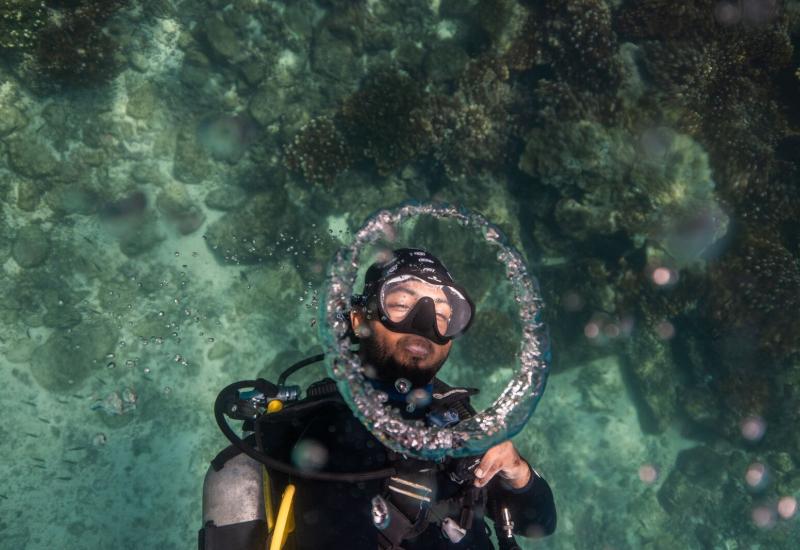Pensacola, Florida

ShutterstockPensacola, Florida
Warm Gulf of Mexico waters lap the endless white-sandy beaches on the Sunshine State's Panhandle, and just offshore is some of Florida's best scuba diving. Florida's Panhandle is a seascape of wrecks, towers and ledges, all brimming with supersized fish. Just miles off some of the Panhandle's coast are hundreds of ships and artificial reef structures that dot the ocean floor.
PENSACOLA Historic Pensacola offers art galleries, restaurants and other attractions such as the impressive National Naval Aviation Museum (Pensacola is home to the Blue Angels Naval aerobatics team). Pensacola is a port city located on Pensacola Bay. With more than 50 miles of protected shoreline, clear waters and beautiful sugar-white sand, Pensacola is a perfect destination for divers. The bay connects to the emerald-green waters of the Gulf of Mexico. For scuba diving enthusiasts, the waters off Pensacola offer dive sites that can be matched to all experience levels, from beginner to advanced.
Whether you are visiting Pensacola or live here, an incredible diving experience awaits. This is a wreck diver's paradise, with more than 100 sunken vessels, military tanks and planes - and even artificial reefs fashioned from demolished intracoastal bridges - all bathed in warm waters. The undisputed jewel in Pensacola's wreck-diving crown is the 911-foot former aircraft carrier USS Oriskany, one of the world's largest purpose-sunk wrecks.
POPULAR DIVE SITES USS Oriskany: The Oriskany saw action in both the Korean and Vietnam wars, and since its 2006 sinking, she has been sitting in an upright north-south position, southeast of Pensacola Pass. The "Mighty O" can be appreciated by trained tech divers who can explore the flight deck at 145 feet, but there's plenty to explore shallower (the top of her conning tower is at 68 feet and the decking island starts at 84 feet). Spanish hogfish, butterflyfish and other angelfish are common; the lucky diver can encounter anything from passing whale sharks to mantas. It's best to plan at least two dives to take in the Oriskany's massive superstructure.
SS San Pablo: This 315-foot former World War II supply and transport vessel rests nine miles south of Pensacola Pass at a depth of 80 feet. Diving the San Pablo reveals her stern and three huge boilers to be intact, but the majority of her hull is twisted steel surrounded by a field of metal debris and rubble. Most of the wreckage resulted from dynamite charges used to reduce the wreck's height to allow safe navigation for other ships crossing the site. Count on seeing massive schools of snapper and baitfish hovering over the wreck. Hydroids and algae encrust all of the metal surfaces giving the ship a fuzzy, green camouflaged look, and leopard toadfish hide in bottom rubble.
Pete Tide II: This oil field supply boat, resting perfectly upright in 105 feet of water, the Pete Tide II has a prominent and easily accessible wheelhouse. That swim-through is a huge attraction for divers, as it is for schools of spadefish. Clumps of hydroids and a scattering of sea cucumbers populate the long stretch of metal decking.
DIVE CONDITIONS Surface water temps range from the mid-50s in winter to the mid-70s and mid-80s from May to September. Visibility at inshore sites is generally 25 to 50 feet and from 50 to 100 at the Oriskany. Use minimal thermal protection in summer and a 5 or 7mm wetsuit or drysuit in winter.
PARTNERS Florida Department of State










